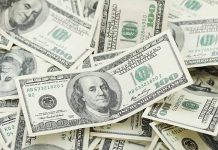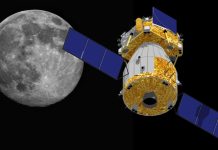
The U.S. economy grew at a slower-than-expected pace in Q4 2024, raising questions about future policy decisions and economic resilience.
Top Takeaways
- U.S. economy grew at 2.3% in Q4 2024, down from 3.1% in Q3
- Consumer spending increased by 4.2%, driving economic activity
- Business investment fell by 2.2% due to tariff uncertainty and labor constraints
- The Federal Reserve paused interest rate cuts, awaiting clarity on policies
Economic Growth Slows, Consumer Spending Remains Strong
The U.S. economy’s growth rate in the fourth quarter of 2024 fell short of expectations, expanding at an annualized pace of 2.3%. This figure, while positive, was lower than the anticipated 2.6% and marked a decline from the third quarter’s 3.1% growth. Despite the slowdown, consumer spending emerged as a bright spot, increasing by 4.2% annually and continuing to be the primary driver of economic activity.
The slower growth can be attributed to various factors, including complex logistic disruptions, volatile international market conditions, and persistent inflationary pressures. These elements combined to subdue what could have been a stronger surge in corporate investments and household expenditures.
“This was a decent fourth quarter GDP print that highlighted rock-solid consumer spending and a sustainable economic expansion that should carry on into the first half of this year,” said economist Scott Anderson of BMO Capital Markets.
US advance q4 GDP +2.3% (consensus +2.6%)
— unusual_whales (@unusual_whales) January 30, 2025
Business Investment and Government Spending
While consumer spending remained robust, business investment presented a different picture. It fell by 2.2% due to tariff uncertainty and labor supply constraints, with significant declines in equipment and structures. This downturn in business investment indicates a cautious approach by companies in the face of economic uncertainties.
“The U.S. consumer has been unstoppable, supported by wealth creation, a strong labor market, and lending. Still, inflation is a bit too high for the Fed’s liking and the bar to a March rate cut is rising.” stated Ellen Zentner, Chief Economic Strategist at Morgan Stanley.
Government spending, another key component of economic growth, rose by 2.5% in the fourth quarter. However, this increase was slower compared to the 5.1% rise observed in the third quarter. The moderation in government spending growth may reflect budget constraints or shifts in fiscal priorities.
Federal Reserve’s Stance and Future Outlook
In light of these economic indicators, the Federal Reserve has maintained a cautious approach. The central bank paused interest rate cuts, awaiting clarity on various policies, including those related to tariffs and immigration. This decision reflects the Fed’s careful balancing act between supporting economic growth and managing inflationary pressures.
“We don’t need to be in a hurry to adjust our policy stance,” Fed Chair Powell emphasized.
Looking ahead, economists project the economy to grow by 2.2% in 2025. This forecast suggests a continued positive trajectory, albeit at a more moderate pace compared to previous years. The challenge for policymakers and businesses alike will be to navigate the complex economic landscape, balancing growth initiatives with measures to address ongoing concerns such as inflation and labor market dynamics.






















